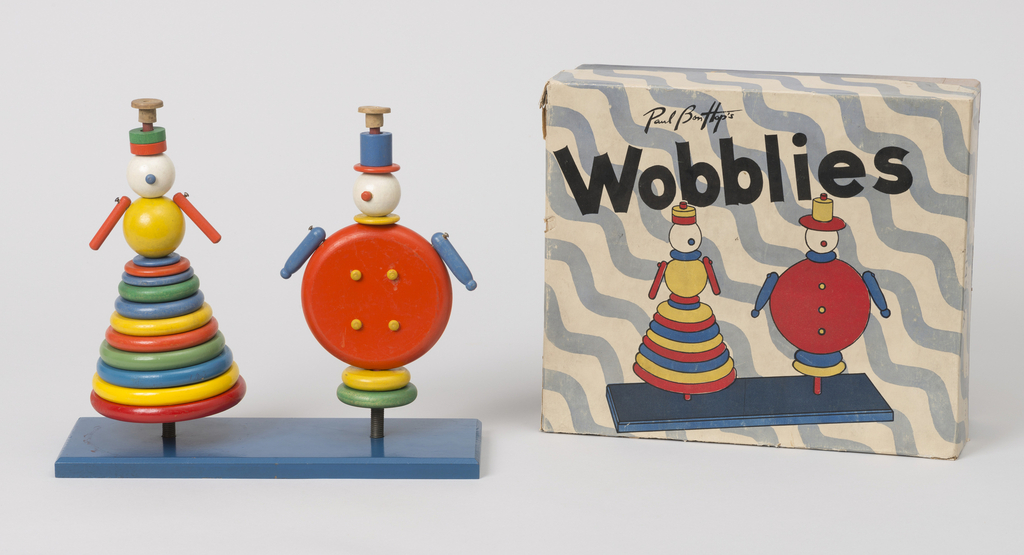The Wobblies show their wobbliness, which is cleverly illustrated on their box by faint wavy blue lines. Interestingly, there are two definitions of the word wobbly. The first is “inclined to wobble; shaky.” A Wobbly (capitalized) is also “a member of the Industrial Workers of the World, an international, revolutionary industrial union founded in Chicago in 1905.”[1] Although this toy bares no obvious connection to the Industrial Workers of the World (IWW) or to their radical social cause, there is nonetheless a sense of radicalism in the Wobblies’ highly modern design, whose reductive colorful forms recall the visual vocabulary used by the European avant-garde during the early twentieth century.
The Wobblies’ colorful geometric bodies recall the spirit of the modern movement immediately following WWI. In many countries designers and artists alike integrated progressive concepts of play, childhood, and creativity into their artworks, designs, and ideologies.[2] The early 1920s offers several examples: Giacomo Balla’s and Fortunato Depero’s Italian Futurist toy and furniture designs, Dutch architect and designer Gerrit Rietveld’s furniture designs for children, and in the Weimar Bauhaus’ first preliminary course leader Johannes Itten’s pedagogical exploration of play and games. Nearly two decades later, the Wobblies bring these concepts to American postwar consumer culture.
The Wobblies were manufactured by the New York–based company Paul Bon Hop, Inc.; there is little information today about the company or their products. Two photographs of the company’s toy designs appear in a 1949 issue of the Minneapolis’ Walker Art Center’s Everyday Art Quarterly, however. The issue focuses on “well-designed objects for everyday use” and features objects shown in their annual exhibition “Useful Gifts.” The first photograph is of Molly Kewls, a female figure created from a set of free-form plastic balls and rectilinear connectors. The second is a “Trail-a-way” painted wooden train similar in design to the Wobblies. Browsing recent eBay sales shows that the Molly Kewls toy is not uncommon. A photograph from a previous sale of the toy shows the lid of her black metal container, which has an illustration of her abstract and geometric body on it. Next to her image is her name, the company’s name, and the slogan “TOYS ARE TOOLS FOR LEARNING,” which not only states Molly’s purpose, but also echoes the progressive sentiment of the twentieth-century modern movement’s fascination with childhood, creativity, and play.
[1] Webster’s New World College Dictionary, 5th ed., s.v. “wobbly.”
[2] For an extended discussion about the complex relationship between modern design and childhood see Century of the Child: Growing by Design, 1900–2000. Edited by Emily Hall and Libby Hruska. New York: Museum of Modern Art, 2012. Exhibition catalog.
Catherine Acosta is a graduate student in the History of Design and Curatorial Studies program offered jointly by the Parsons School of Design and the Cooper Hewitt, Smithsonian Design Museum. She is a Fellow in the museum’s Product Design and Decorative Arts Department.
